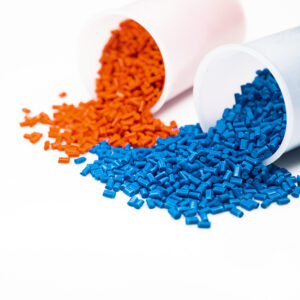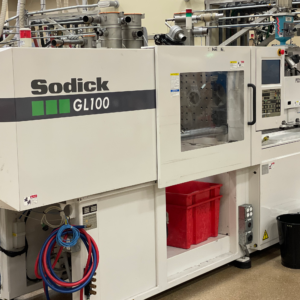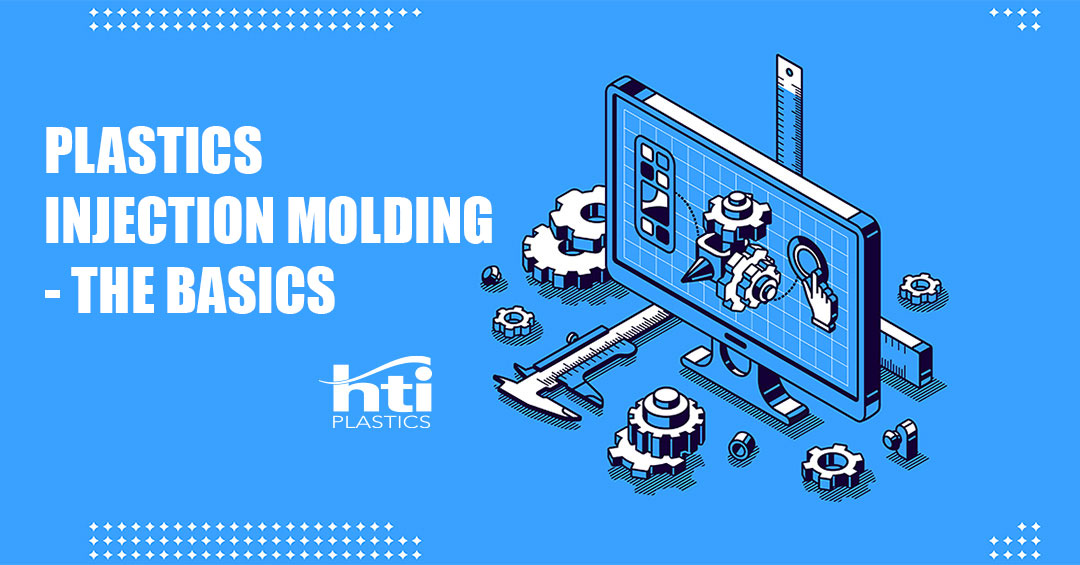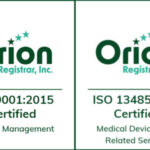Welcome to the HTI Plastics Basic Principles of Injection Molding Blog series. In this series we will look at topics related to the basics of this type of manufacturing responsible for so many products we used every day. We will examine, topics such as a general overview of what injection molding is, common terminology, information injection molders need to quote a project, details of injection molding tools/molds and how a project gets from a concept to a finished good, ready for public consumption.
In the first edition of the Plastics Injection Molding Blog series, we will take a look at the basics of what injection molding is and the main components used when molding a part. There are three basic components of injection molding: the resin or material, the tool or mold and the injection molding machine. Many other components are involved in molding a plastic part; however, these three items are essential and provide the basic foundation of plastic injection molding. More information on injection molding can be found by clicking here.
PLASTIC RESIN

First, we will examine the plastic resin, sometimes referred to as the material. Obviously without this resin a plastic part cannot be molded. Plastic resin comes in small pellets typically in the shape of a
cylinder or a disk. They are usually only a few millimeters in size. The resin can come in virgin form, which means there is no colorant added to the resin, or it can come in a blend, with additives, colorant, etc. added to the base resin.
At HTI we use thermoplastic resins exclusively. These resins melt at temperatures, typically ranging from 300 to 700 degrees Fahrenheit, depending on the grade. Thousands of grades of resin are available with various base resins, additives, and fillers. These grades are typically separated into two categories: Commodity Grades and Engineering Grades.
- Commodity Grades – lower cost, lower mechanical performance
- Engineering Grades – higher cost, higher performance
Resin grade is the main factor that determines mechanical properties of the part, cosmetics, cost, and manufacturability.
INJECTION MOLDING TOOL
The second basic component we will look at is the tool, sometimes referred to as the mold. This is the component that the plastic resin is injected into giving the part its shape. The plastic injection molding tool is an assembly of metal plates, pins, bushings, and inserts that contains the part geometry. These are often made out of steel but can also be made out of aluminum. The tool gets installed into the injection molding machine where the plastic is melted and injected into the tool. We will get into the specifics of the injection molding process in a later blog as part of this series.
The tool provides a path for molten plastic resin to fill the part geometry. It also has passageways for cooling fluid to pass through, as part of the cooling process for the parts. Finally, the tool has a means of releasing the part, referred to as ejection.
It is also important to note each tool has a specific cavitation, largely determined by the estimated annual usage (EAU) of the part the tool is producing. The cavitation of the tool refers to the number of parts that specific tool can make at a time, i.e., if the tool is a four-cavity tool, it can make four parts per shot.
HTI IN-HOUSE TOOL ROOM
At HTI, we have an in-house tool room. While we have the capability to produce tools, that is not our focus, and we typically use our robust network of tool builders when building a tool. Our in-house tool room is focused on preventative maintenance and cleaning of the tools. The goal of our tool room is to obtain maximum dimensional stability and prolong the life of the tool. We aim to keep all tools housed at HTI in top condition. You can learn more about our in-house tool room by clicking here.
INJECTION MOLDING MACHINE

Finally, to injection mold a part, one obviously needs an injection molding machine. Injection molding machines consist of the following parts: injection cylinder, drive unit, hopper, screw and barrel, heater bands, check valve, fixed platen, moving platen, tie bar, and mold clamping cylinder. We will review the parts of the injection molding machine in more detail in a subsequent blog. For now, we will focus on the basics of the injection molding machine.
CLAMPING UNIT
Injection molding machines are fairly universal in the basic design and function. Machine functions are divided into two units, the clamping unit and the injection unit. The tool is attached to the platens, which are part of the injection unit. Once the tool is attached, the clamping unit is able to move the tool open and closed. It provides force, or tonnage, to keep the tool closed against the injection pressure which may be as much as 30 psi to 40,000 psi. The clamping unit also actuates the ejector system of the tool.
INJECTION UNIT
The injection unit does just what it sounds like it does. This unit of the injection molding machine takes plastic resin pellets, melts them, and then fills and pressurizes the tool. The hopper contains the plastic resin and the resin is moved from the hopper to the heated barrel. The material is moved through the barrel by a rotating screw, as it moves down the barrel it begins to become molten plastic. When enough volume of material accumulates ahead of the screw it stops rotating, the material in front of the screw is then injected through the nozzle into the mold cavity. This is much more complex than the simplistic description given here, and we will go into detail on this process in later blogs in this series. More details can also be found on our YouTube Channel by watching our 101 Video
In the past machines were all hydraulic, but over the past 20 years the industry has been moving toward servo driven electric machines. At HTI we have a combination of hydraulic and electric machines. Our machines at HTI are horizontal injection molding machines, and range in tonnage from 30 to 1,800 tons.
We hope you have enjoyed our first post in our Plastics Injection Molding Basics blog series and found it informative. Our hope is to provide our customers and prospective customers with the basic knowledge of how their parts are made and drive conversation with our staff so they have a great experience with HTI and we can provide even better service than we already do to our customers.
Please keep an eye out for more blogs to come in this new series.


